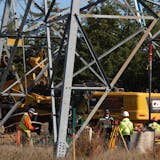Neel Kashkari of the Federal Reserve Bank of Minneapolis sat at the front of a meeting room at Cargill recently and wondered aloud if he could have heard right.
Was Cargill's chief financial officer really suggesting that higher interest rates — and thus higher costs to borrow money — is what it would take to get corporate executives to invest more capital in their businesses?
Cargill CFO Marcel Smits laughed and took another shot at explaining what he meant.
Smits and others have observed that since the Great Recession the world's central banks, including the U.S. Federal Reserve, continued to do what they could to keep interest rates down and stimulate their economies. The folks in charge of companies like Cargill can't help but conclude from this that the economy must still be really sick.
"If you would gradually start increasing rates, I think people would say, 'We're back into a more normal world,' " Smits said. "That would drive confidence in boardrooms and would allow people to say, "You know what, this feels a little more normal.' "
This is not a silly observation, of course. Business leaders can't know for sure what would happen to the global economy if central banks like the Fed retreated completely from their policies of stimulating the economy.
Yet maybe it's time to be reminded of one common misconception in business, a sort of certainty executives develop that markets and economies are cyclical and in the fullness of time things will get back to normal. Sometimes things just don't — and capital spending could be among them.
What if the 10-year Treasury note interest rate, lately creeping up to about 2.6, percent, is still more or less the same in a few years? Will corporate boardrooms still be full of people who lack the conviction to approve a bigger capital investment budget?


